- Ag breakdowns
- Posts
- Nium
Nium
Clean Ammonia on Demand


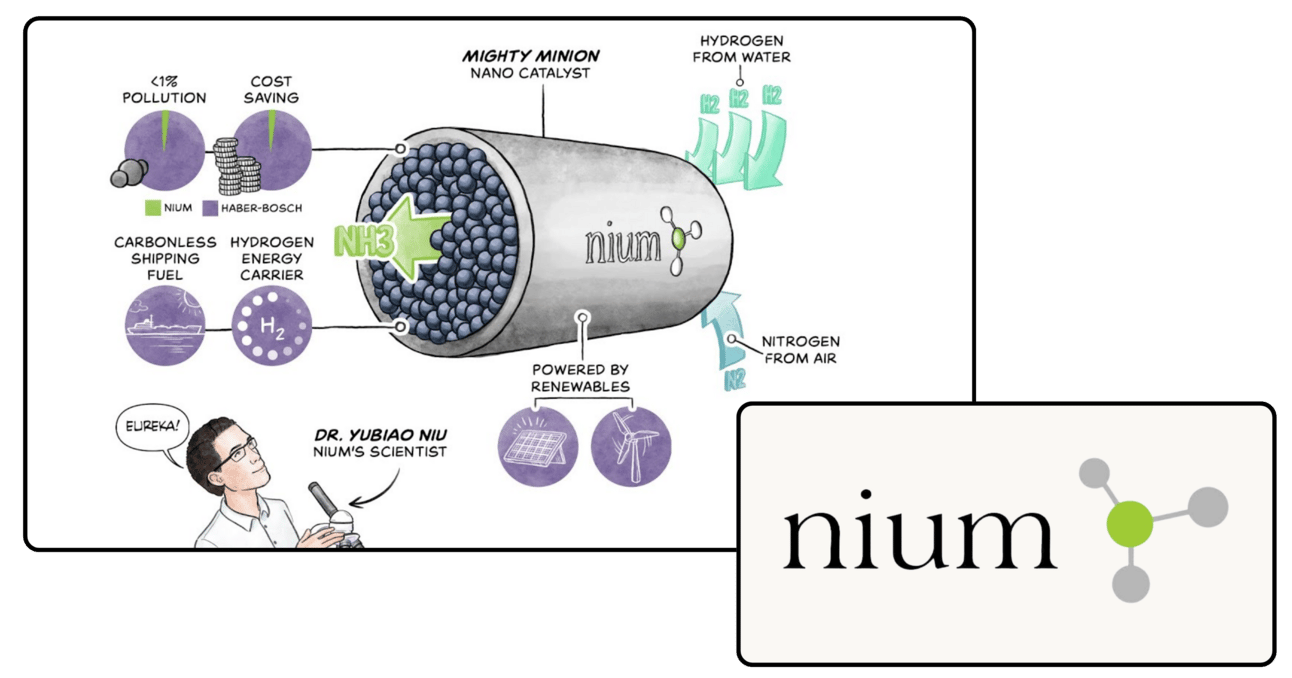
“Clean Ammonia on Demand”
Nium's mission is to eliminate emissions at scale while disrupting and decentralising the $75 billion ammonia market. For this, they have developed an incredibly energy-efficient chemical reactor that synthesises ammonia at a fraction of the price and pollution of traditional methods.
🔗Check them out here: wearenium.com

Have a topic you want us to write about?
A company you’d like us to cover?
Have feedback for us?
Just hit reply - we'd love to hear from you!
The Macro
Let's break down how the ammonia market is splitting into two distinct paths:
Traditional production continues to expand steadily.
Clean ammonia is emerging as a game-changing force.
The conventional ammonia market, now at 188 million tonnes (2024), is growing at a stable rate of 1.88% yearly through 2029, aiming to reach 206.8 million tonnes.
This growth comes from:
Rising need for fertilizers to feed our growing world population.
More uses in industry, like cooling systems and cleaning water.
Growing countries needing more ammonia as they build their industries.
Clean ammonia is set to grow at an amazing 88% each year from 2023 to 2028.
This huge jump is happening because:
Companies and countries are trying to cut pollution.
Many industries, especially shipping and power plants, want cleaner fuel options.
New technology is making clean ammonia cheaper to produce.
What This Means
The old way of making ammonia, while crucial for growing food and running factories, has a big problem: it creates lots of pollution. The process we use now (called Haber-Bosch) adds about 2% to the world's carbon pollution, with shipping adding even more.
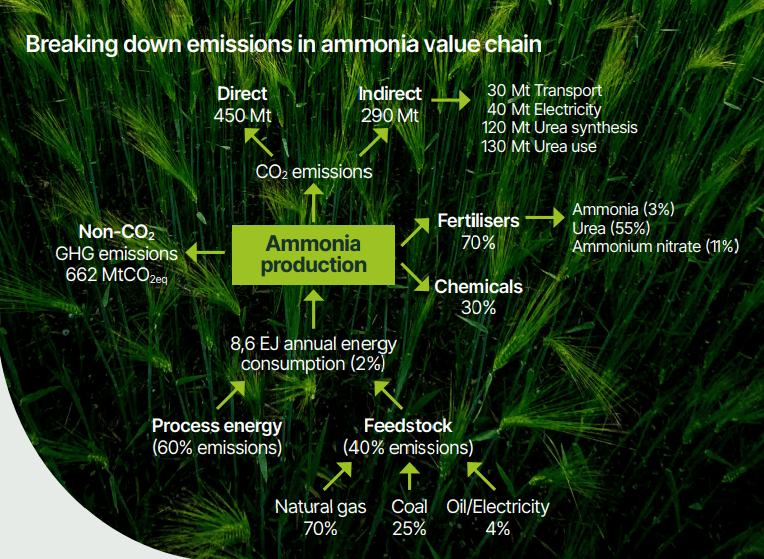
Right now, when farmers use ammonia-based fertilizers, half of it goes to waste. This lost nitrogen feeds excessive algae growth in lakes and rivers, makes oceans more acidic, and creates nitrous oxide, a greenhouse gas 298 times more powerful than carbon dioxide.
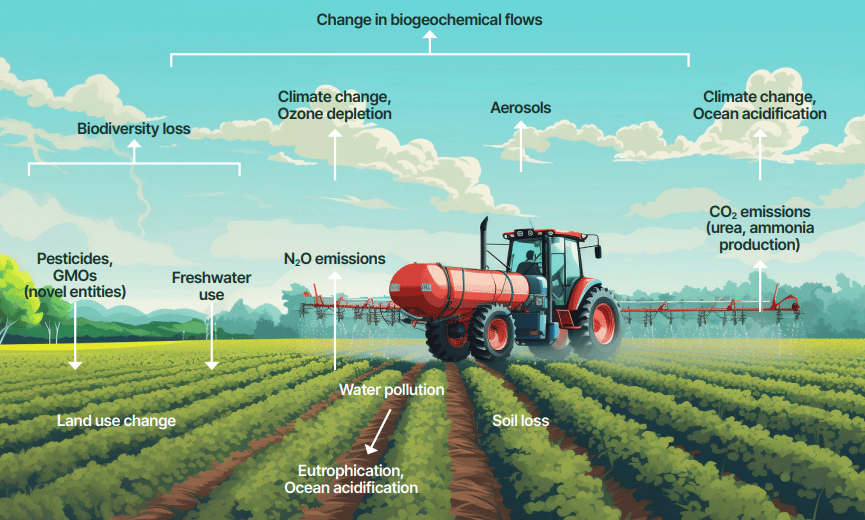
Farmers are starting to use better techniques like slow-release fertilizers and precise application methods, which could cut emissions by up to 70%. This, plus new rules about pollution, makes clean ammonia look more attractive.
As the technology improves and costs drop, more companies will likely switch to clean ammonia, especially in places with tough environmental rules and plenty of clean energy.
We're entering a time where both types of ammonia will be used together, but clean ammonia will likely become more popular as companies focus more on protecting the environment and following new rules about pollution.
The Impact
At the core of Nium's innovation is their groundbreaking nanocatalyst technology - a development that does for ammonia production what microchips did for computing.
This proprietary catalyst, housed in compact units called "mighty minions," enables ammonia synthesis under much gentler conditions than traditional methods, eliminating the need for extreme temperatures and pressures that make current production so energy-intensive.
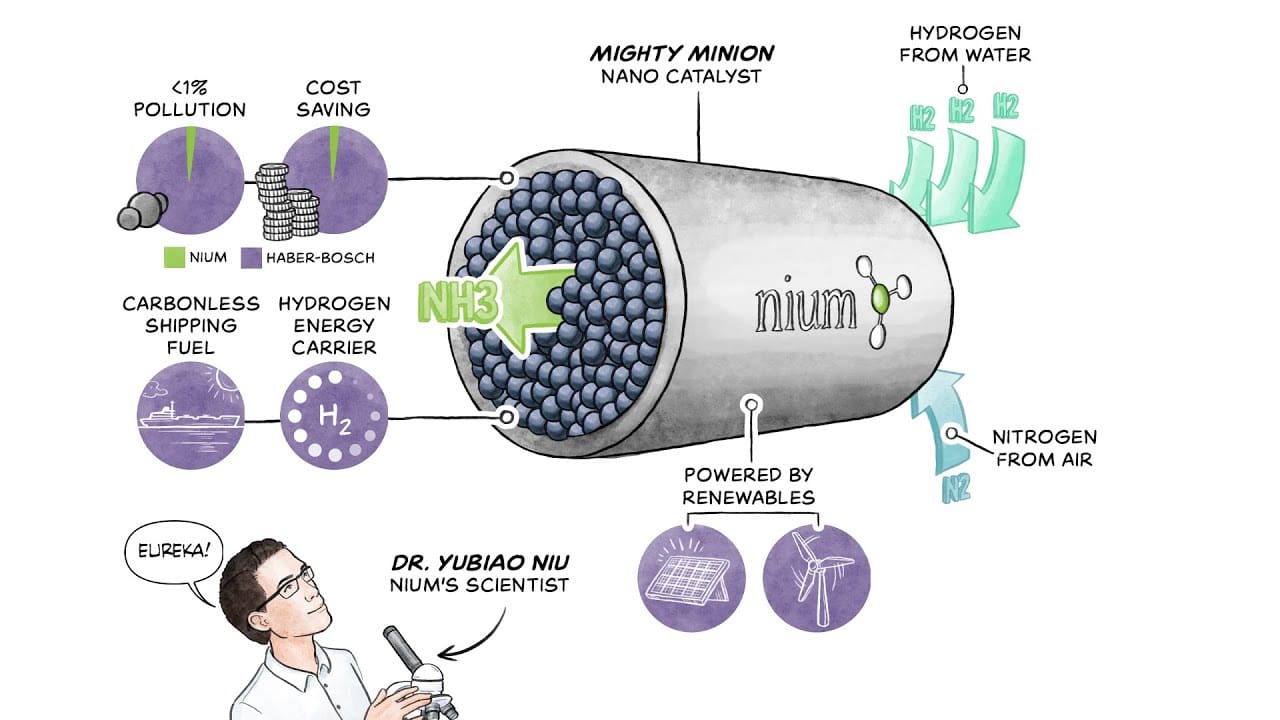
In easier terms, its like having a water filter at home instead of buying bottled water. It's more convenient, cheaper in the long run, and better for the environment. Nium is doing the same thing, but for ammonia.
How It Works
The minion reactors represent a complete reimagining of ammonia production:
Uses nanocatalyst technology to combine nitrogen from air with hydrogen at lower temperatures and pressures.
Operates with any hydrogen feedstock, making it adaptable to green hydrogen sources.
Functions with renewable energy sources, tolerating power fluctuations that would disrupt traditional systems.
Produces ammonia on-demand through a modular, containerized system that can be installed wherever needed.
Process Advantages
Unlike the Haber-Bosch process, which requires massive centralized facilities and fossil fuels, Nium's system:
Reduces energy requirements significantly through milder operating conditions.
Achieves production efficiency of 0.082-1 tons CO2 per ton of ammonia (compared to 1.6-3.8 tons with traditional methods).
Enables truly local production, eliminating most transportation emissions.
Allows for precise production volumes matching actual demand.
Industry Impact
This technology is reshaping the $75 billion ammonia market in several ways:
Production Model
Shifts from massive centralized plants to distributed, local production.
Enables on-site manufacturing at farms and industrial facilities.
Reduces dependency on complex supply chains.
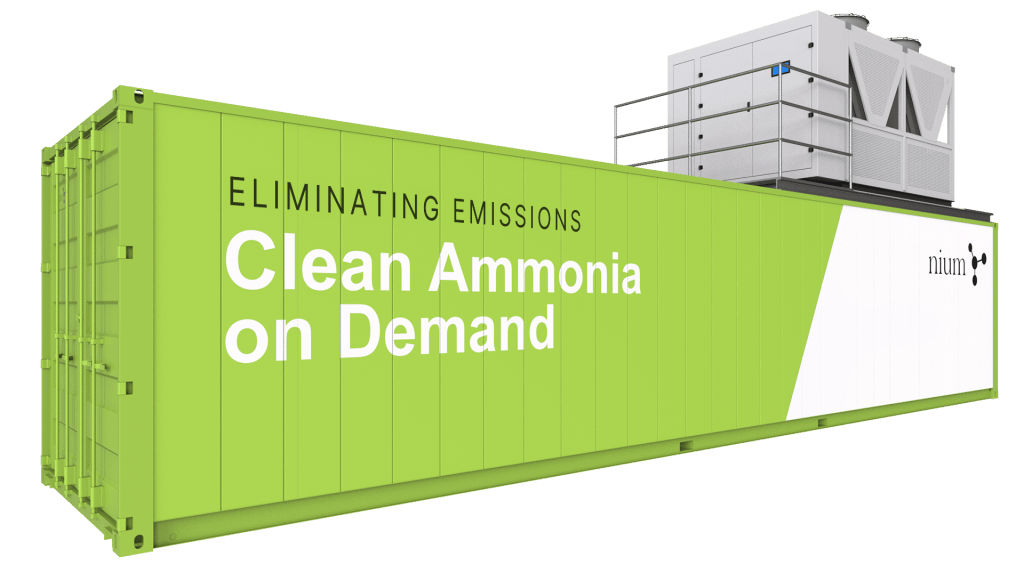
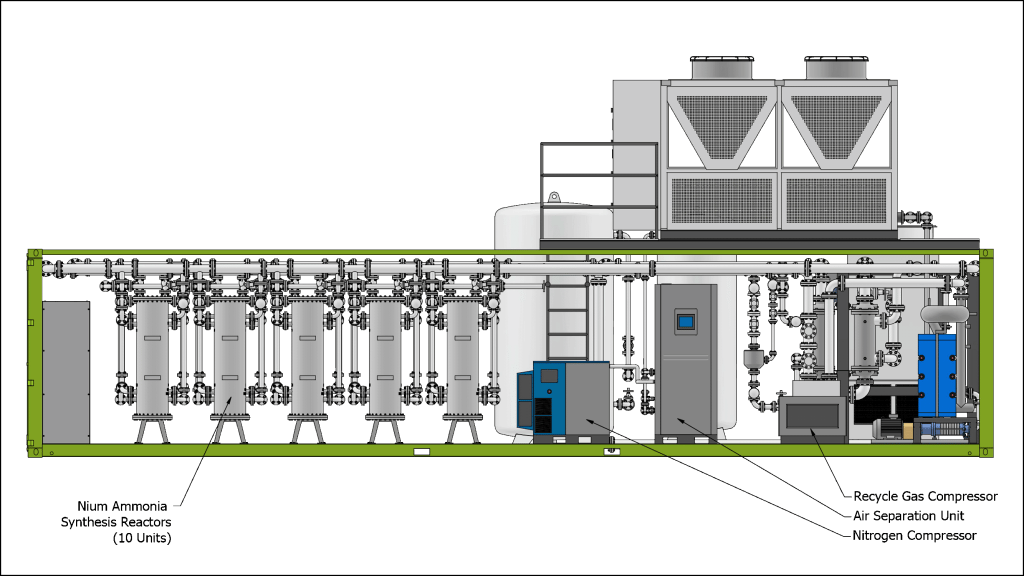
Environmental Performance
Eliminates up to 95% of direct process emissions.
Cuts transport-related emissions by about 30 MtCO2/year.
Reduces waste through precise, on-demand production.
Market Structure
Gives farmers and local producers more control over their supply.
Creates new opportunities for renewable energy integration.
Opens possibilities for clean shipping fuel and energy storage applications.
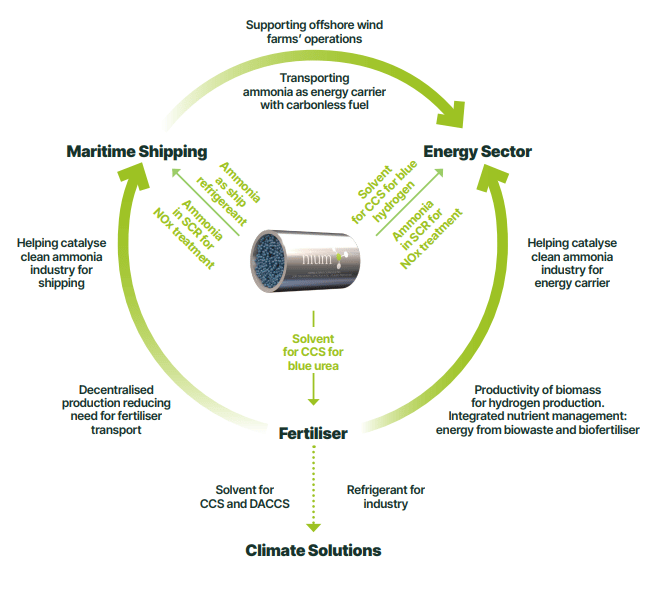
Future Implications
Nium's technology serves as a catalyst for broader industry transformation:
Enables the transition to clean ammonia production without sacrificing efficiency.
Creates new possibilities for renewable energy storage and transport.
Provides a pathway for decarbonizing multiple industries simultaneously.
Offers a scalable solution that can grow with increasing clean ammonia demand.
The Business
Business Model
The Problem: Traditional ammonia production is dirty, expensive, and happens in massive factories. This means high costs to transport it to farms and businesses that need it.
The Solution: Nium created small "mini-factories" (they call them minions) that can make clean ammonia right where it's needed
How They Make Money
They sell these mini-factories to businesses that need ammonia.
They charge licensing fees to let others use their special technology.
They sell the clean ammonia these units produce.
Who Buys From Them
Farmers (for fertilizer).
Energy companies (for storing clean energy).
Shipping companies (for clean fuel).
Why Customers Choose Them
It's cheaper (no huge transport costs).
It's cleaner for the environment.
Customers can make exactly how much they need, when they need it.
Fundraising
Pre-Seed round, August 2022:
Amount: $147,083
Investor: Carbon13Seed round, June 2023:
Amount: $3 Million
Investors: AgFunder, DCVC, Carbon13, and othersInnovate UK Grant, Early 2024: £1 Million
Founder Story
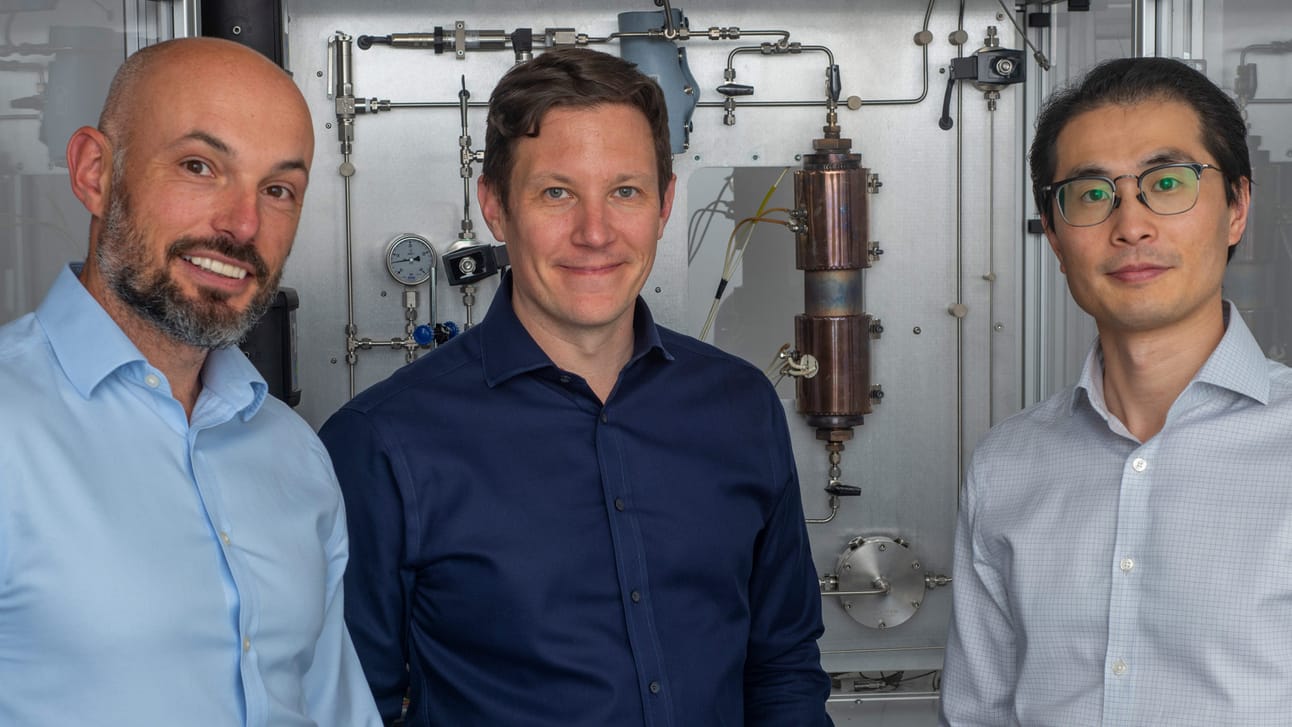
From left to right: Lewis Jenkins | Phil Hunter | Dr. Yubiao Niu
Lewis Jenkins, Co-Founder and CEO. Before co-founding Nium, he served as COO of Generation, a McKinsey & Company education to employment social enterprise. He also co-founded Experience Something Different (ESD), a climate and sustainability education company
Dr. Yubiao Niu, Co-Founder and CSO. He is an expert in chemical engineering. He pursued his PhD at the University of Birmingham under the European "Catsense" doctoral training network focusing on novel nanocatalysts for water electrolysis. His work laid the foundation for Nium's low-energy ammonia synthesis technology.
Phil Hunter, Co-Founder and COO. He is a motorsport engineer turned entrepreneur with experience across various sectors including automotive, data, insurance, and retail. Before starting Nium, he grew companies like Nimbla significantly by leveraging his technical skills in coding Big Data analysis alongside operational leadership roles.
Jobs
They have no careers page on their website, bu you can contact them directly at this
e-mail: [email protected]
Our Analysis
The ammonia industry is splitting in two: the old way (massive plants, fossil fuels, high emissions) and the new way (clean, decentralized, flexible).
At the heart of Nium’s play is a tiny, game-changing reactor they call a “Mighty Minion.” These modular units use nanocatalyst technology to produce ammonia without the extreme heat and pressure of traditional Haber-Bosch plants. You could say that it’s like going from steam engines to electric motors overnight.
Why It Matters
This is huge, because ammonia is essential — fertilizer, fuel, industrial applications — but it’s also dirty.
Producing it the old-fashioned way dumps up to 3.8 tons of CO2 per ton of ammonia. Nium can cut that by 95% while slashing energy use.
The market is moving in their direction. Clean ammonia demand is skyrocketing (88% CAGR through 2028), thanks to shipping, energy storage, and tighter emissions rules. And with local production, Nium eliminates transport emissions and supply chain headaches.
The Case Against Nium
Big questions remain. Scaling hardware is hard. Can they manufacture at cost? Can they sell fast enough to justify their tech-heavy business model? And will traditional ammonia giants block them out with their deep pockets and entrenched infrastructure?
Then there’s hydrogen. Nium’s reactors can run on any hydrogen source, but green hydrogen is still expensive. If hydrogen prices don’t fall, their cost advantage shrinks.
The Play
Nium is rearchitecting a $75B industry. If they execute, they redefine ammonia production — small, clean, local, and efficient.
They don’t need to replace ammonia giants overnight. They just need to prove their model works at scale. If they do, they’ll be the first ones selling picks and shovels in the clean ammonia gold rush.
More Resources
What do you think of this week's company? |
Have a topic you want us to write about?
A company you’d like us to cover?
Have feedback for us?
Just hit reply - we'd love to hear from you!
If you enjoyed today's breakdown, forward this email to a friend!
If you're just seeing this email now, subscribe here.